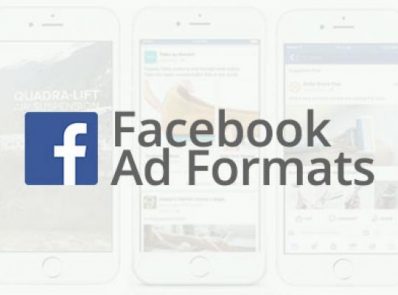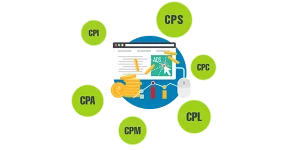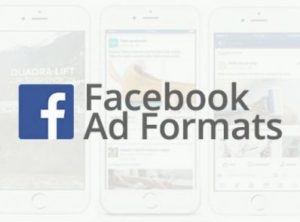Exploring Different Ad Formats for Affiliate Marketing : Native, Banner, Pop, Push, and Search Ads
5 min read
Exploring Different Ad Formats for Affiliate Marketing : Native, Banner, Pop, Push, and Search Ads
In the world of digital advertising, various ad formats have emerged to cater to different marketing objectives and audience preferences. Each ad format offers unique advantages and disadvantages, making it essential for marketers to understand their characteristics to make informed decisions. In this article, we will explore five popular ad formats: Native, Banner, Pop, Push, and Search Ads. We will discuss their definitions, provide examples, highlight their pros and cons, and identify the popular verticals associated with each format.
1. Native Ads:
Definition: Native ads blend seamlessly into the surrounding content, appearing as natural recommendations rather than obvious advertisements. They match the look, feel, and context of the platform on which they are displayed.
Example: A popular example of native ads is sponsored content on social media platforms like Facebook, where sponsored posts appear in users’ newsfeeds alongside organic content.
Pros:
Non-disruptive: Native ads do not interrupt the user experience, resulting in higher engagement and acceptance.
Improved user experience: By aligning with the platform’s aesthetics, native ads provide a more cohesive and less intrusive browsing experience.
Enhanced targeting options: Native ads allow marketers to target specific audiences based on interests, demographics, and behavior.
Cons:
Limited creative freedom: Native ads need to adhere to the platform’s guidelines, which may restrict certain design elements and messaging.
Difficulty in measuring performance: Determining the effectiveness of native ads can be challenging due to their seamless integration and lack of distinct metrics.
Popular Verticals: Native ads are commonly used in content-driven verticals such as news, lifestyle, health, and entertainment.
2 Banner Ads:
Definition: Banner ads are graphical advertisements displayed on websites or mobile apps. They typically appear as rectangular or square images, either static or animated, and can be placed at the top, bottom, or sides of a webpage.
Example: An example of a banner ad is a static image promoting a new product or service displayed on a website’s sidebar.
Pros:
High visibility: Banner ads occupy a prominent space on a webpage, increasing the likelihood of being noticed by users.
Creative flexibility: Marketers have ample room for creativity in designing banner ads, allowing them to convey their message effectively.
Easy tracking and optimization: Banner ads often come with built-in tracking mechanisms, enabling marketers to monitor performance and make necessary adjustments.
Cons:
Banner blindness: Users have become accustomed to banner ads, leading to banner blindness where they tend to overlook or ignore them.
Ad blockers: With the rise of ad-blocking software, banner ads may not reach a significant portion of the target audience.
Limited engagement: Banner ads, especially static ones, may not offer interactive elements that can engage users effectively.
Popular Verticals: Banner ads are widely used in e-commerce, technology, travel, and finance sectors.
3 Pop Ads:
Definition: Pop ads, also known as pop-up ads, open in separate windows or tabs without the user’s initiation. They can appear as full-page overlays, interstitials, or new browser windows.
Example: When visiting a website, a pop-up ad might suddenly appear, covering the entire screen and promoting a special offer or newsletter subscription.
Pros:
High visibility: Pop ads demand immediate attention as they forcefully capture the user’s focus.
Effective for call-to-action: Pop ads can be optimized to drive specific actions, such as newsletter sign-ups, downloads, or sales.
Cost-effective: Pop ads are generally less expensive compared to other ad formats, providing an opportunity for budget-conscious marketers.
Cons:
Intrusive user experience: Pop ads are often perceived as intrusive and disruptive, potentially frustrating users and impacting brand perception.
Increased use of ad blockers: Due to their intrusive nature, pop ads are more likely to be blocked by ad-blocking software, limiting their reach.
Lower engagement rates: Users are more likely to close or ignore pop ads, resulting in lower engagement rates compared to other formats.
Popular Verticals: Pop ads are commonly associated with gaming, software, entertainment, and adult content verticals.
4 Push Ads:
Definition: Push ads are notifications delivered to users’ devices, typically via web browsers or mobile apps. These ads appear even when users are not actively browsing the associated platform.
Example: A push notification might be sent to a user’s smartphone, promoting a limited-time sale or announcing breaking news updates.
Pros:
Wide reach: Push ads can reach users even when they are not actively using a specific app or browsing the web.
Immediate visibility: Push notifications display directly on users’ screens, making them highly noticeable and likely to be seen.
Personalization and targeting options: Marketers can customize push notifications based on user preferences, behavior, and demographics.
Cons:
Potential for user annoyance: Push ads, if not delivered strategically, can lead to user frustration, causing them to disable or unsubscribe from notifications.
Limited message length: Due to space constraints, push ads require concise messaging, which can limit the amount of information conveyed.
Dependency on user opt-ins: Users must opt in to receive push notifications, which may restrict the potential reach of the ad campaign.
Popular Verticals: Push ads are prevalent in industries such as e-commerce, news, lifestyle, and mobile gaming.
5 Search Ads:
Definition: Search ads are text-based advertisements that appear on search engine results pages (SERPs) in response to specific keyword queries. These ads are typically displayed above or alongside the organic search results.
Example: When searching for “best running shoes,” sponsored text ads related to running shoe brands may appear at the top or bottom of the search results.
Pros:
Targeted audience: Search ads enable precise targeting based on users’ search queries, ensuring relevance and increasing the likelihood of conversions.
High intent audience: Users actively searching for specific information or products through search engines have a higher purchase intent.
Measurable performance: Search ads provide robust analytics, allowing marketers to track impressions, clicks, conversions, and return on investment (ROI).
Cons:
Competitive bidding: Due to the popularity of search ads, bidding for keywords can become highly competitive, leading to increased costs.
Limited ad space: Search ads are limited to a few lines of text, making it challenging to convey complex messages or showcase visual elements.
Dependency on keyword optimization: To ensure search ads appear in relevant searches, diligent keyword research and optimization are crucial.
Popular Verticals: Search ads are extensively used in sectors such as e-commerce, travel, finance, and local services.
Conclusion:
Understanding various ad formats is crucial for marketers to make informed decisions about their advertising strategies. Each ad format comes with its own advantages and disadvantages, catering to different marketing objectives and audience preferences. Whether it’s the seamless integration of native ads, the visual impact of banner ads, the immediacy of pop and push ads, or the targeted intent of search ads, marketers can leverage these formats to achieve their campaign goals. By aligning the ad format with the appropriate vertical and understanding its pros and cons, marketers can optimize their advertising efforts and maximize their return on investment.



